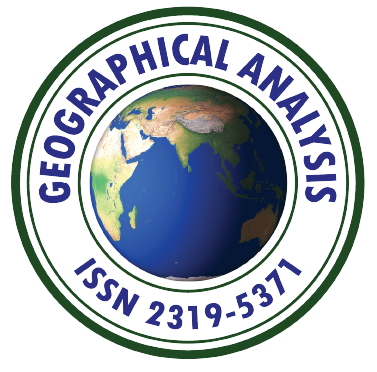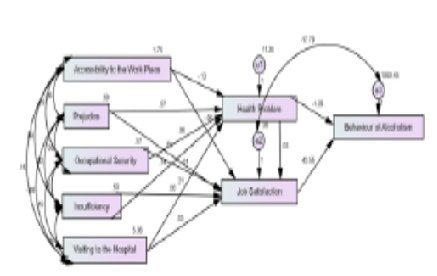
Geographical analysis
Department of Geography & GIS

Department of Geography & GIS

Geographical analysis
Year: 2024, Volume: 13, Issue: 2, Pages: 54-62
Original Article
P Murali1∗, S Balaselvakumar2, S Vadivel2, T Pavendar2
1Guest Lecturer, Post Graduate and Research Department of Geography, Thanthai Periyar Government Arts and Science College (Autonomous), Tiruchirappalli, Tamil Nadu, India
2Associate Professor, Post Graduate and Research Department of Geography, Thanthai Periyar Government Arts and Science College (Autonomous), Tiruchirappalli, Tamil Nadu, India
*Corresponding Author
Email: [email protected]
Received Date:18 September 2024, Accepted Date:27 December 2024
Background: Globally, in urban areas solid wastes are the most perceptible environmental problems because of increasing population, urbanization and industrialization and consumption patterns are results of increasing amounts of solid waste. Therefore, solid waste generation creates more ecological concerns, particularly in urban areas. This leads to environmental and public health issues for the residents and solid waste management workers. Objective: To measure the causal relationship of occupational health issues of solid waste management workers working in the south zone of Coimbatore Corporation. Methodology: The information was collected through the questionnaire schedule from the 300 sanitary workers working in the south zone of Coimbatore Corporation by stratified random sampling method. These variables are vital factors in determining the occupational status of sanitary workers in this study area. The results of the Structural Equation Model (SEM) of sanitary workers' data set suit the fit indices and the proposed hypothesis causal model relationships are acceptable fit by the recommended values. Result: The structural equation model demonstrates that the variables namely behaviour of alcoholism, visiting the hospital, job satisfaction, accessibility to the workplace, health problems, public prejudice, occupational security and insufficiency of equipment are the occupational issues of sanitary workers in the study area. The scale used in this study adequately fits into the data collected and it concludes that the hypothesized thirteen assumptions model fits the collected sample data. As a result, the likelihood and statistical association of essential variables estimate, the good fit of the structural model and represent an adequate description of sanitary workers indicators support the model fit.
Keywords: Occupational Health, Solid Waste, SEM, Path Analysis
© 2024 Murali et al. This is an open-access article distributed under the terms of the Creative Commons Attribution License, which permits unrestricted use, distribution, and reproduction in any medium, provided the original author and source are credited.
Published By Bangalore University, Bengaluru, Karnataka
Subscribe now for latest articles and news.